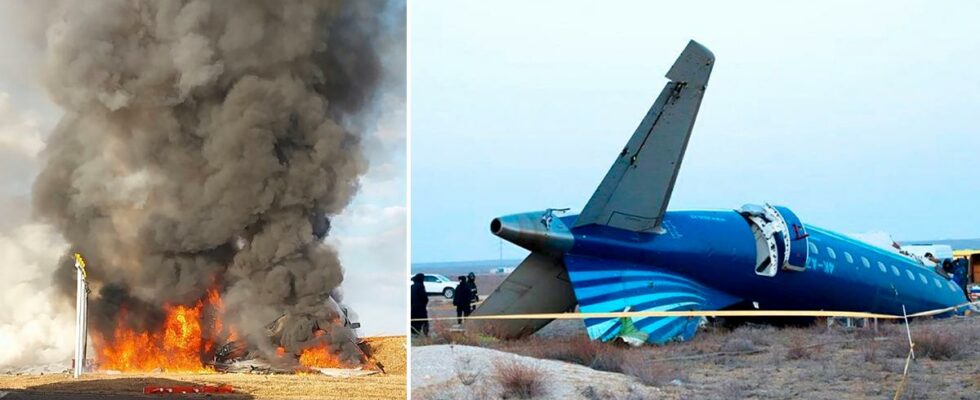unsaveSave
Two recent crashes.
A common denominator between the survivors.
The connection fits with an earlier theory about which seats are the safest – but one of the world’s leading experts says another factor is at play.
Here the CEO bows – apologizes after the plane crash in South Korea
0:38
The plane crash in South Korea on December 30 left 179 dead. Only two on board survived – both were cabin crew and sat at the very back of the plane. Three interacting factors have been reported to be behind the accident: An initial bird strike, that the wheels then did not deploy during the emergency landing, and finally the wall at the end of the runway that the aircraft crashed into.
On Christmas Day, a plane crashed in western Kazakhstan. It was on its way from Baku in Azerbaijan to Grozny in southern Russia. According to consensus, the crash is believed to have been caused by a Russian anti-aircraft missile. 29 of the 67 on board survived and were all seated in the rear of the plane.
The accidents are completely different in nature, but have the common denominator that those who survived were positioned at the back. CNN notes that it is consistent with the historical notion that business class is good until the plane has problems. The TV channel is also paying attention a 2015 review which gives support to the perception.
expand-left
full screen The plane that crashed in Azerbaijan. Photo: AP
Reviewed 17 accidents
Then the news magazine Time investigated all 17 American crashes with both dead and survivors in the years 1985–2000. The figures showed that the fatality rate in the rear third of the plane was 32 percent. The corresponding figures for the front and middle thirds were 38 and 39 percent, respectively.
Time also showed that middle seats in the back third led to a 28 percent fatality rate—compared to 44 percent among those seated closest to the aisle in the middle of the plane.
However, several experts warn against drawing any conclusions from the review.
– There is no data showing a relationship between seats and survival. Every accident is unique, says Hassan Shahidi, director of the Flight safety foundation, to CNN.
He is concurred by Cheng-Lung Wu, assistant professor at the School of Aviation at the University of New South Wales in Sydney:
– If we are talking fatal crashes, there is almost no difference in where you sit.
expand-left
full screen 179 people died in the plane crash in South Korea. Photo: AP
Professor: Another thing decides
expand-left
full screen Professor Ed Galea. Photo: Phil Weedon/University Of Greenwich
Ed Galea, professor of fire safety at the University of Greenwich in London, has done extensive studies on evacuations from crashed planes and says the same thing:
– There is no magical safest seat. It depends on the circumstances of the accident you are involved in. Sometimes it’s better in the front, sometimes in the back.
Ed Galea nevertheless highlights another decisive factor about where to sit in an airplane to have the greatest chance of surviving an accident:
Near an emergency exit.
His studies show that a majority of all airplane accidents are survivable because since 1988, airplane seats have had to withstand forces of 16G. This means that the moment of the crash itself is often passable.
The critical thing is how quickly you can get out.
– Every second counts. Every second can be the difference between life and death. Proximity to an exit is more important than which part of the plane you sit in.
“Then I choose another departure”
Ed Galea says that he was able to dispel several misconceptions about flight evacuations, for example that passengers automatically move forward in the plane when they exit.
His research shows that survival is greatest within five rows of an emergency exit. This applies regardless of where you sit on the plane.
– If there is no seat within five rows of an exit, I look for another departure. I want to be as close to an exit as possible. If I’m nine or ten seats away, I’m not happy.
